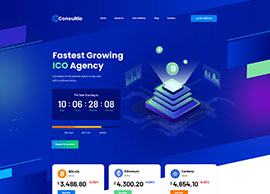AWS
AWS offers a broad set of global cloud-based products that help organizations move faster, lower IT costs, and scale
What Is AWS?
AWS stands for Amazon Web Services, it needs no formal introduction, given its immense popularity. The leading cloud provider in the marketplace is Amazon Web Services. It provides over 170 AWS services to the developers so they can access them from anywhere at the time of need.
AWS has customers in over 190 countries worldwide, including 5000 ed-tech institutions and 2000 government organizations. Many companies like ESPN, Adobe, Twitter, Netflix, Facebook, BBC, etc., use AWS services.
For example, Adobe creates and updates software without depending upon the IT teams. It uses its services by offering multi-terabyte operating environments for its clients. By deploying its services with Amazon services, Adobe integrated and operated its software in a simple manner.
Now, before getting started with what is AWS, let us first give you a brief description of what cloud computing is.
AWS Meaning: The Amazon Web Services (AWS) platform provides more than 200 fully featured services from data centers located all over the world, and is the world’s most comprehensive cloud platform.
Amazon web service is an online platform that provides scalable and cost-effective cloud computing solutions.
AWS is a broadly adopted cloud platform that offers several on-demand operations like compute power, database storage, content delivery, etc., to help corporates scale and grow.
How Does it Work?
That was all about what is AWS. Next, let’s have a look at the history.
History of AWS
- In the year 2002 – AWS services were launched
- In the year 2006- AWS cloud products were launched
- In the year 2012 – AWS had its first customer event
- In the year 2015- AWS achieved $4.6 billion
- In the year 2016- Surpassed the $10 billion revenue target
- In the year 2016- AWS snowball and AWS snowmobile were launched
- In the year 2019- Released approximately 100 cloud services
Moving forward, we will learn more about AWS services.
How Does AWS Work?
AWS usually works in several different configurations depending on the user’s requirements. However, the user must be able to see the type of configuration used and the particular server map with respect to the AWS service.
Advantages of AWS
- AWS provides a user-friendly programming model, architecture, database as well as operating system that has been already known to employers.
- AWS is a very cost-effective service. There is no such thing as long-term commitments for anything you would like to purchase.
- It offers billing and management for the centralized sector, hybrid computing, and fast installation or removal of your application in any location with few clicks.
- There is no need to pay extra money on running data servers by AWS.
- AWS offers a total ownership cost at very reasonable rates in comparison to other private cloud servers.
Disadvantages of AWS
- AWS has supportive paid packages for intensive or immediate response. Thus, users might need to pay extra money for that.
- There might be some cloud computing problems in AWS especially when you move to a cloud Server such as backup protection, downtime, and some limited control.
- From region to region, AWS sets some default limitations on resources such as volumes, images, or snapshots.
- If there is a sudden change in your hardware system, the application on the cloud might not offer great performance.
Migration
Migration services use 3 different sub-services, DMS, SMS, and snowball to transfer the data physically from Datacenter to AWS.
- DMS also known as Database Migration Service is used to migrate one database to another.
- SMS is a Server Migration Service that helps to migrate on-site servers to AWS within a short period of time.
- Snowball is used to migrate data inside in terabytes to data outside within the AWS environment.
Applications of AWS
The most common applications of AWS are storage and backup, websites, gaming, mobile, web, and social media applications. Some of the most crucial applications in detail are as follows:
1. Storage and Backup
One of the reasons why many businesses use AWS is because it offers multiple types of storage to choose from and is easily accessible as well. It can be used for storage and file indexing as well as to run critical business applications.
2. Websites
Businesses can host their websites on the AWS cloud, similar to other web applications.
3. Gaming
There is a lot of computing power needed to run gaming applications. AWS makes it easier to provide the best online gaming experience to gamers across the world.
4. Mobile, Web and Social Applications
A feature that separates AWS from other cloud services is its capability to launch and scale mobile, e-commerce, and SaaS applications. API-driven code on AWS can enable companies to build uncompromisingly scalable applications without requiring any OS and other systems.
5. Big Data Management and Analytics (Application)
- Amazon Elastic MapReduced to process large amounts of data via the Hadoop framework.
- Amazon Kinesis to analyze and process the streaming data.
- AWS Glue to handle, extract, transform and load jobs.
- Amazon Elasticsearch Service to enable a team to perform log analysis, and tool monitoring with the help of the open source tool, Elastic-search.
- Amazon Athena to query data.
- Amazon QuickSight to visualize data.
6. Artificial Intelligence
- Amazon Lex to offer voice and text chatbot technology.
- Amazon Polly to translate text-to-speech translation such as Alexa Voice Services and echo devices.
- Amazon Rekognition to analyze the image and face.
7. Messages and Notifications
- Amazon Simple Notification Service (SNS) for effective business or core communication.
- Amazon Simple Email Service (SES) to receive or send emails for IT professionals and marketers.
- Amazon Simple Queue Service (SQS) to enable businesses to subscribe or publish messages to end users.
8. Augmented Reality and Virtual Reality
- Amazon Sumerian service enables users to make the use of AR and VR development tools to offer 3D web applications, E-commerce & sales applications, Marketing, Online education, Manufacturing, Training simulations, and Gaming.
9. Game Development
- AWS game development tools are used by large game development companies that offer developer back-end services, analytics, and various developer tools.
- AWS allows developers to host game data as well as store the data to analyze the gamer’s performance and develop the game accordingly.
10. Internet of Things
- AWS IoT service offers a back-end platform to manage IoT devices as well as data ingestion to database services and AWS storage.
- AWS IoT Button offers limited IoT functionality to hardware.
- AWS Greengrass offers AWS computing for IoT device installation.
AWS Pricing Model
AWS pricing model is very cost-effective which makes it most reliable. For instance, if a user wants to use a cloud server for an hour, AWS asks the user to pay only for an hour. There is no such long-term commitment as five years or 10 years and pay accordingly. Besides, there is an AWS free tier service to increase the potential customers’ affordability by offering free services with AWS servers up to 58 products that help users gain some experience with the AWS platform.
Companies Using AWS
Whether it’s technology giants, startups, government, food manufacturers or retail organizations, there are so many companies across the world using AWS to develop, deploy and host applications. According to Amazon, the number of active AWS users exceeds 1,000,000. Here is a list of companies using AWS:
- Netflix
- Intuit
- Coinbase
- Finra
- Johnson & Johnson
- Capital One
- Adobe
- Airbnb
- AOL
- Hitachi
Mario Scott enrolled for the AWS Solutions Architect Certification course and was able to enhance his skills and land an exciting new job. Read his success story in our Simplilearn AWS Solution Architect Review here.
AWS Services
Amazon has many services for cloud applications. Let us list down a few key services of the AWS ecosystem and a brief description of how developers use them in their business.
Amazon has a list of services:
- Compute service
- Storage
- Database
- Networking and delivery of content
- Security tools
- Developer tools
- Management tools
Compute Service
These services help developers build, deploy, and scale an application in the cloud platform.
AWS EC2
- It is a web service that allows developers to rent virtual machines and automatically scales the compute capacity when required.
- It offers various instance types to developers so that they can choose required resources such as CPU, memory, storage, and networking capacity based on their application requirements.
AWS Lambda
- AWS Lambda is a serverless compute service. It is also responsible for executing code for applications.
- It helps you execute a program without the hassle of managing servers.
Storage
AWS provides web data storage service for archiving data. Also, its primary advantage is disaster data recovery with high durability.
Amazon S3
- It is an open cloud-based storage service that is utilized for online data backup.
- Amazon S3 provides storage through a web services interface and is designed for developers where web-scale computing can be easier for them. Click here, to know more.
Amazon EBS
- It provides a high availability storage volume for persistent data. It is mainly used by Amazon EC2 instances.
- EBS volumes are used explicitly for primary storage such as file storage, databases storage, and block-level storage.
As one of the top three cloud providers available, there are plenty of career opportunities related to GCP. Simplilearn’s Google cloud certification provides you with the foundation you will need to start or enhance your current career working with this comprehensive cloud platform. Get started today!
Database
AWS database domain service offers cost-efficient, highly secure, and scalable database instances in the cloud.
DynamoDB
- It is a flexible NoSQL database service that offers fast and reliable performance with no scalability issues.
- It is a multi-region and durable database with instant built-in security, backup and restores features.
RDS
- It is a managed distributed relational database cloud service that helps developers to operate and scale a database in a simple manner.
- We launched it to simplify the setup, operation, and scaling process for developers while accessing a relational database.
Networking and Delivery of Content
It offers a highly secure cloud platform and connects your physical network to your private VN with a high transfer speed.
VPC
- It helps a developer to deploy AWS resources, such as Amazon EC2 instances into a private virtual cloud.
- It gives you control over the complete cloud network environment, including the section of your IP address range, subnets, route table configuration, and network gateways.
- With this, developers can both IPv4 and IPv6 at a time for your resources in a highly secure environment.
Route 53
- It is a web service with a highly available Domain Name System (DNS) that helps users to route software by translating the text into an IP address.
- We launched it for developers to provide them a cost-effective method of routing end users to cloud applications.
Developer Tools
It helps a user build, deploy, and run an application source code automatically. It also updates the server and instance on the workload.
CodeStar
It is a service designed to manage application development in a single place. Here, developers can quickly develop, build and deploy applications on AWS
Code Build
- This removes the hassle of managing physical servers and helps developers build and test code with continuous scaling.
- In simple words, it compiles your code, executes unit tests, and gives output artifacts that are ready to deploy.
Security, Identity & Compliance
It helps in monitoring a safe environment for your AWS resources by providing limited access to specific users.
IAM
- Identity Access Management is a framework that helps in maintaining access to AWS services in a secure way.
- The service gives you Shared access to your AWS account and Secure access to AWS services that run on the AWS EC2 application.
Note: Click here, to know about IAM.
KMS
- It enables users to create and manage the encryption keys that are used for encrypting data.
- The service includes a key generation method where digital sign within your applications becomes easier.
Management Tools
Using this service, an individual can optimize costs, minimize risks, and automate all the resources running efficiently on the AWS infrastructure.
Cloud Watch
- It is a monitoring tool for AWS resources and customer applications running on the AWS platform.
- The service helps you gather and access all your operational data in the form of logs from a single interface.
Cloud Formation
- This service helps you in monitoring all your AWS resources in one place so that you can spend minimum time managing those resources and maximum time developing applications.
- It allows developers to manage their cloud infrastructure either in a text file or a template.
With this, we have come to the end of what is AWS article.
Conclusion
In this introductory tutorial “what is AWS”, we discussed what cloud computing is, what is AWS and its history, and we also went through all the AWS services in detail.
Whether you’re an experienced AWS Architect or you’re aspiring to break into this exciting industry, enrolling in our Cloud Architect Training program will help individuals with all levels of experience master AWS Cloud Architect techniques and strategies.
If you are interested in enhancing your AWS knowledge, wehighly recommend you check Simplilearn’s AWS Solutions Architect Certification Training Course. This program can help you hone the right skills and make you job-ready in no time.
Do you have any questions for us in the article “What is AWS”? Please feel free to leave them in the comments section of this article; our experts will get back to you as soon as possible.
FAQs
Amazon Web Service, or AWS, is an online platform providing cost-effective, scalable cloud computing solutions. It offers a range of on-demand operations, such as compute power, content delivery, database storage, and more, to help enterprises and organizations grow.
AWS comes with a user-friendly programming model, database, and architecture. It is a cost-effective service with no long-term commitments for the services you purchase. It allows hybrid computing and fast installation/uninstallation of applications in any location within minutes. It comes with extra flexibility and security in addition to reasonable rates compared to other private cloud servers.
Some cons associated with AWS are extra payment for supportive packages for intensive or immediate response. You might also face some cloud computing problems in AWS when moving from a cloud server, like backup protection and downtime. Also, the application on the cloud doesn’t offer great performance when there is a sudden change in your hardware system.
To start with AWS, you need to learn the best practices for setting up your account and environment. Move on to knowing the AWS Management Console and then install the AWS Cloud Development Kit (CDK).
AWS offers over 200 fully featured services. It allows you to select the programming language, database, operating system, web application platform, and other needed services. You can build, deploy, and manage applications, websites, and processes on AWS secure platform.
Google Cloud is a complete suite of public cloud computing services and resources by Google. Contrastingly, AWS is a secure cloud service managed and developed by Amazon. While Google Cloud provides Google Cloud Storage, AWS grants Amazon Simple Storage Services.
Amazon Web Services is a complete cloud computing platform, including a mixture of infrastructure as a service (IaaS), software as a service (SaaS), and platform as a service (PaaS) offerings.










































